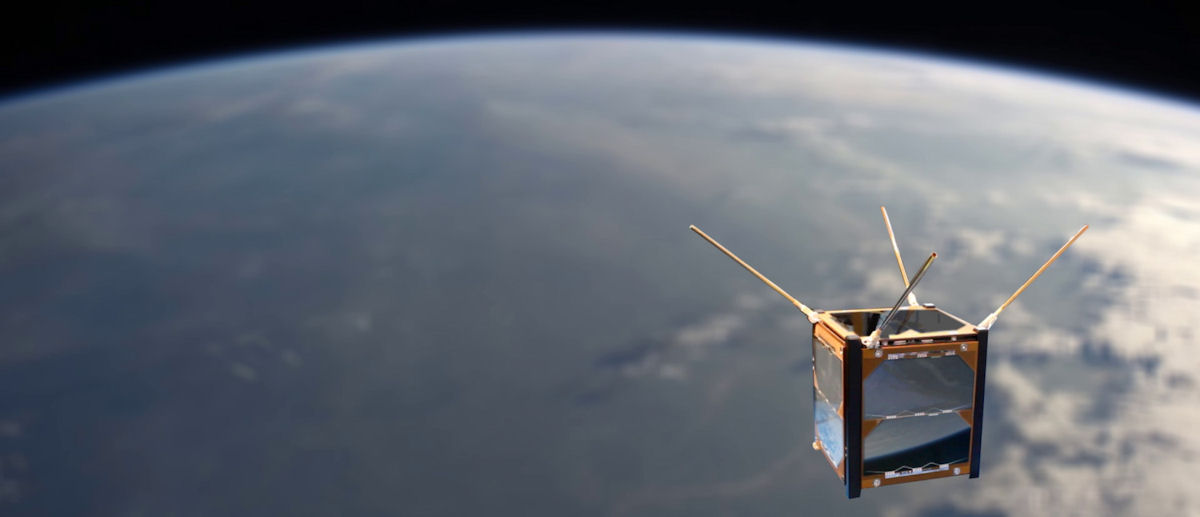Nigeria’s nanosatellite is set for launch on May 23 to May 27 window. The launch will usher Africa’s first nanosatellite into the orbit alongside four other countries: Japan, Ghana, Bangladesh, and Nepal.
By Oluwatobi Opusunju
The Director General of National Space Research and Development Agency (NASRDA), Seidu Mohammed said the nanosatellites will go into orbit from the launch base at Miami, Florida, US.
“Nanosatellite” or “nanosat” is an artificial satellite with a wet mass between 1 and 10 kg (2.2 and 22.0 lb). A successful launch will be consolidating Nigeria’s position as Africa’s major satellite powerhouse with billions of US dollars already invested in its satellite industry including setting up of offshore and in-shore infrastructures as well as the buildup of a large pool of human capacity in the high-skill satellite industry.
Nigeria kicked off its forage into the satellite industry in 2003 with the launch into space of NigeriaSat-1, a low earth orbit (LEO) satellite for weather reports and other phenomena. It was built for NASRDA by the UK-based satellite technology company, Surrey Space Technology Limited. In 2007, it launched two more LEOs: NigeriaSat-2 and NigeriaSat-X.
A communication satellite Nigcomsat-1 was launched in 2004 with the help of Chinese government. Nigcomsat-1 is deemed to be Africa’s first communication satellite. It would later be replaced with Nigcomsat-1R in 2011 after Nigcomsat-1 satellite failed in space after losing power on 11 November 2008.
Why countries build nanosatellite
“One rationale for miniaturizing satellites is to reduce the cost: heavier satellites require larger rockets with greater thrust that also has a greater cost to finance. In contrast, smaller and lighter satellites require smaller and cheaper launch vehicles and can sometimes be launched in multiples.”
According to Wikipedia, the nanosatellite and microsatellite segment of the satellite launch industry has been growing rapidly in recent years and was based on the Spanish low-cost manufacturing for Commercial and Communication Satellites from the 1990s. Development activity in the 1–50 kg (2.2–110.2 lb) range has been significantly exceeding that in the 50–100 kg (110–220 lb) range.
In the 1–50 kg range alone, there were fewer than 15 satellites launched annually in 2000 to 2005, 34 in 2006, then fewer than 30 launches annually during 2007 to 2011. This rose to 34 launched in 2012, and 92 launched in 2013.
In February 2017, Times of Israel reports that the first Israeli research nanosatellite was launched from India. The foot-long, 11-pound BGUSAT orbiter successfully reached space. It will study weather, desertification, airglow and other phenomena.
Nigeria’s entry into the space industry has been fuelled by research to address its environmental challenges and also fill its communication gaps for a population close to 200 million people.
‘The nanosatellite is a scientific satellite that is to study environmental parameters. They would help in most of these environmental issues to study them – environmental characterization. In addition to that, they would also be carrying a camera that would acquire some form of data,” he Seidu to the News Agency of Nigeria (NAN) in New York.
Roadmap to put a Nigerian in space
“What we have also demonstrated by this is the fact that Nigerian engineers and scientists earlier built Nigerian Sat-X using the laboratory in Missouri. They’ve gone ahead again to build nanosatellite in the laboratory at Kyushu University in Japan and all these are parts of efforts to sustain technology already transferred to Nigerian scientists and engineers,” he added.
He disclosed that the engineers that design and launch Nigerian satellites are at the Centre for Satellite Technology Development at NASRDA and by 2030 Nigeria would be a space power, where astronauts will be sent into space from a Nigerian-owned launch facility on the country’s soil.
“There is a ‘Roadmap for Development of Space Science and Technology’ ending in 2030.We hope by 2030, facilities for launch would have been provided in Nigeria so that by that year, we would have launched the satellite from Nigeria into space,” he disclosed.
“We would be able to complete our Assembling, Integration, Testing and Design before 2018, and by 2022, most of these efforts would begin to crystallize. The large-scale commercialization of space equipment would be possible in our country, and by 2030, we believe that there would be a launching facility from our country. We believe before 2030, there will be the need for Nigeria to be an international space station,” he added.































